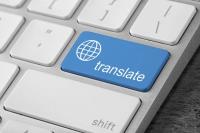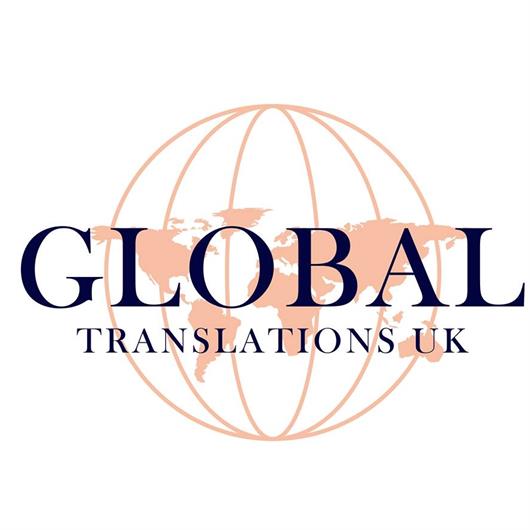 Add My Company
Add My Company
Sign In
Google Translate Vs Human Translations
27-05-2022

It’s the 21st century and we’re firmly entrenched in the digital age – which, of course, is no bad thing! It’s wonderful to have so much amazing technology at our very fingertips to help us navigate our way through life and it can prove very useful indeed in all sorts of ways… but it’s also important not to rely on tech too much, as there are some aspects of living that are, in fact, better served with more human involvement, rather than less.
Translation work is just one such example of this. Of course, prior to the advancement of technology and all the digital wizardry that we now have at our disposal, translation services were only provided by language experts and specialists, but as time has gone on, we’ve started to rely more and more on the technology available, such as Google Translate.
This was absolutely inevitable and there are some benefits that can be derived from using services such as these, including speed and efficiency, and cost effectiveness, with translation software often free to use.
Turnaround times are quick when you use Google Translate, this cannot be denied, and you can also take advantage of the fact that you’re able to translate numerous languages using just one tool.
It’s also a fact that translation technology is always improving as the software becomes more sophisticated, which is why so many are attracted to it as an option when there’s translation work to be done.
However, as sophisticated as translation software and apps may well be now or how sophisticated they may become in the future, they will never be a perfect substitution for a professional and experienced human translator.
As beneficial as the likes of Google Translate may be, there are also lots of disadvantages associated with using them – and the main one is that it’s highly likely that the translated work will be inaccurate, a risk you’ll never run when you use a person to get the job done for you.
Machines are also unable to translate context and any resulting mistakes could prove costly for you, both in terms of your bottom line and your brand reputation, as well.
Consider HSBC as a cautionary tale in this regard. Back in 2009, the bank – one of the biggest wealth managers in the world – had to carry out a $10 million rebrand after its slogan was mistranslated in various different markets.
Apparently, the Assume Nothing slogan was mistranslated as Do Nothing… not quite the impression they intended to make!
Untranslatability is also something you need to bear in mind when considering using Google Translate or another similar digital service. This is the property of a text, word or utterance in one language that doesn’t have an equivalent in a second language once translated – and it is something that technology can really struggle with when translating copy.
Lexical gaps occur when there is no direct equivalence between the words, expressions and phrases in one language with the language that the words and phrases are being translated into – but human translators are able to make use of different techniques and procedures, depending on context, to account for this untranslatability… which can prove problematic for software.
For some copy, Google Translate or similar may well be an effective resource to consider but for professional results where accuracy is of the utmost importance, human translation really is the only way to go.
For example, when translating legal documents, aviation manuals and medical content, it’s essential that 100 per cent accuracy is achieved, otherwise the consequences could prove incredibly dangerous… and you simply can’t trust a machine enough to get this kind of job done with that level of accuracy.
Of course, demanding a high standard of accuracy from human translation does mean that turnaround times for jobs will be longer, so this is something that you’ll need to bear in mind when planning translation work.
It’s a matter of weighing up the cost of potential mistakes in the translated copy if you do use technology and deciding if it’s worth the risk… which, typically, it quite simply isn’t!
Discussing human versus technology, Global Translations UK founder Ahmed Elnazir said: “When I studied GCSE Spanish, Google Translate was often a shortcut to help me finish my homework within five minutes.
“Unfortunately, I realised the highest grade I would ever be able to achieve was a C using Google Translate for GCSE Spanish. Alternatively, when I used a textbook and online resources to understand the meaning and spend more time on my homework, I’d achieve an A or A*.
“It’s the same in the translation world. If you’re looking to translate your website and it’ll be the first thing a customer sees, would you prefer they rated it a C or an A*? That could be the difference between purchasing or not purchasing your goods/services.”
Mistranslation could also see you alienate yourself from your customers, cause serious cultural offence and damage your reputation irreparably if mistakes are big enough, so human translation will generally always be a safer investment.
Another important point to bear in mind is that human translators are able to carry out reviews of their own work, so you know what you’re receiving will have been checked and checked again to make sure that it meets the requirements you set out in your brief.
Creativity is something else that technology can struggle with, but human translators won’t have any problem with this, so you can go wild with your copy and not have to worry that your puns, metaphors and similes will be lost in translation.
This means that your brand tone of voice will be understood and appreciated by a wider audience, helping you to cement your position across different markets around the world.
Your translator may also be able to help you come up with other creative phrases and play-on-word techniques that would be more appropriate and more easily understood by your target market… something that software will likely never be able to achieve.
And finally, one of the biggest benefits of opting for human translation services over technology is that you’ll have access to a far wider range of languages, so no matter where you’re choosing to focus your efforts, you’ll be able to find someone who can help.
Currently, there are only 133 languages available on Google Translate, which seems somewhat limited when you consider that there are, in fact, over 7,000 distinct languages in the world.
Google Translate is able to translate some languages better than others. For example, it is terrible when translating Arabic!
As such, Google Translate may be useful to understand an email or a non-technical document in some languages but should never be used for external communication. So, with all this in mind, if you’d like to find out more about professional translations done by a real-life human rather than a piece of software, get in touch with us today.
For more information on Google Translate Vs Human Translations talk to Global Translations UK
Enquire Now
List your company on FindTheNeedle.
